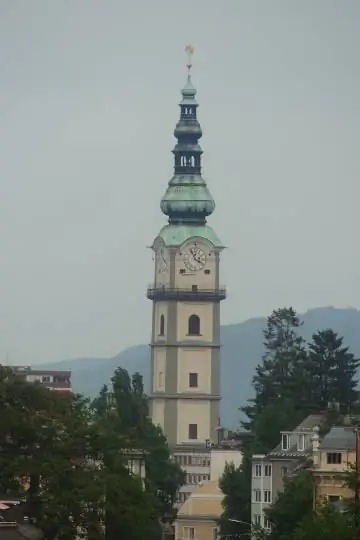
Description of the attraction
The Church of St. Egidius, located in the center of Klagenfurt, near the Old Square, is very popular with tourists. And there are two explanations for this. You can climb the tower of the Church of St. Egidius in order to see the whole city from above. It rises 92 meters above the western part of the temple and therefore has rightfully earned the title of the highest in the federal state of Carinthia. This tower can be seen on Klagenfurt's promotional merchandise. The bell tower of the Church of St. Egidius has long been the hallmark of the city.
Also, most tourists who find themselves in the Church of St. Egidius want to see the chapel of the Apocalypse, painted by the famous artist Ernst Fuchs. The work on the small chapel, the walls and vaults of which are completely covered with realistic, bright, even acidic frescoes, took about 20 years. The renowned painter is a friend of the local priest, therefore, who gave him carte blanche in choosing the subject for the paintings. As a result, we got an original art object that is not like everything you have seen.
The current church of Saint Egidius was built in 1692 on the site of the previous Gothic church, erected in the 13th century and destroyed by an earthquake in 1690. The interior of the church is decorated in a Baroque style, which is characterized by splendor and abundance of gilding. A real treasure of the temple is the amazingly beautiful pulpit by Benedict Bless, carved in 1740. The flat vault of the three-nave church is decorated with a fresco with an optical effect. When you look at it, it seems that the church has a large dome.






